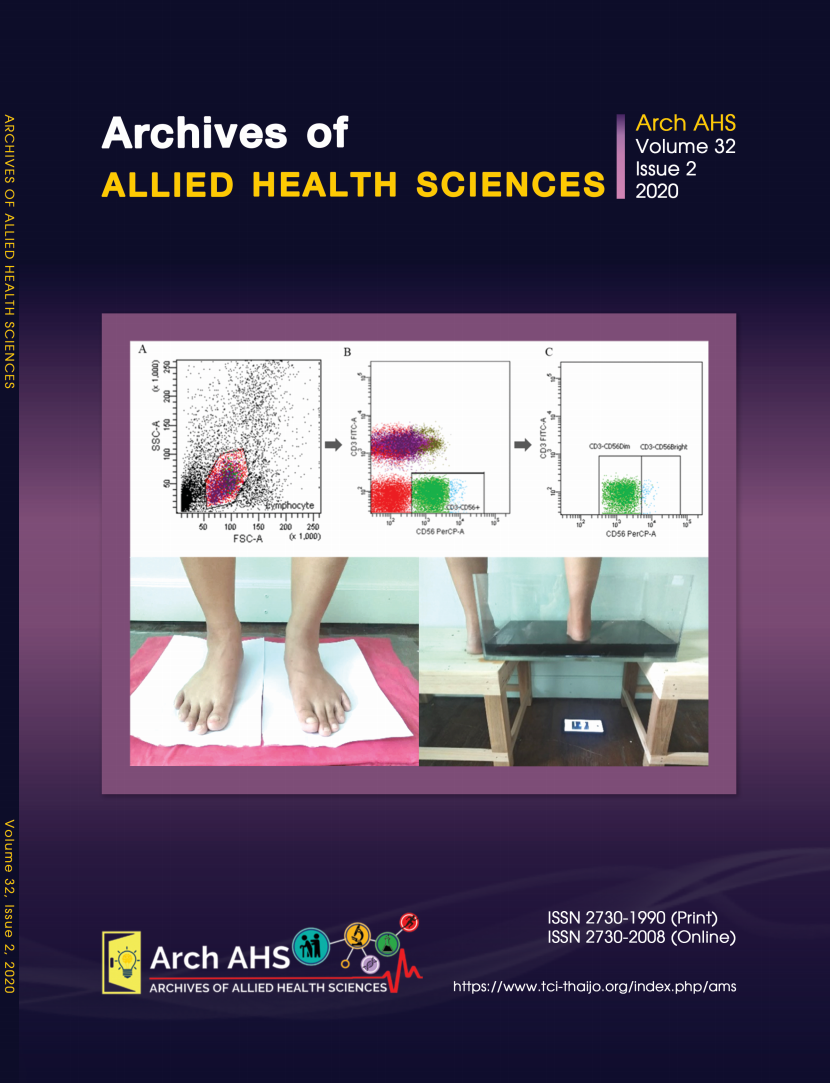Validity of the footprint assessment method using contrast imaging method
Main Article Content
Abstract
Foot-print recording is a popular method of foot parameter measuring as it offers ease and convenience amid use. Radiographic images are both highly reliable and accurate amid clinical diagnosis, though this method incorporates a relatively high cost in regards to evaluating the contrast imaging validity of a foot print. Twenty-nine healthy participants with 57 normal feet were assessed for demographic data. Participants’ foot parameters were assessed via dry footprint and contrast imaging method. For contrast imaging, participants were instructed to stand in a clear box containing black poster colouring. The assessor then took a photo of the normal foot. Study parameters included arch width, plantar arch index (PI), Clarke’s angle, Chip index, and Staheli index. The assessor calculated footprint parameters using a ruler in addition to contrast imaging (kinovea program). Pearson correlation coefficients were applied to calculate the validity of both tools. Significant correlations existed between PI (r=0.50, p-value=0.0001), Chip index (r=0.41, p-value=0.001), and Staheli index (r=0.50, p-value=0.0001). Moreover, there were no significant correlations in regards Clarke’s angle (r=-0.2, p-value=0.13) and arch width (r=0.22, p-value=0.096). Evaluation of PI, Chip index, and Staheli index may be performed via footprint parameters and the contrast imaging method. Clinical measurements pertaining to PI, Chip index, and Staheli index provide valid information in relation to the footprint method and contrast imaging.
Article Details

This work is licensed under a Creative Commons Attribution-NonCommercial-NoDerivatives 4.0 International License.


